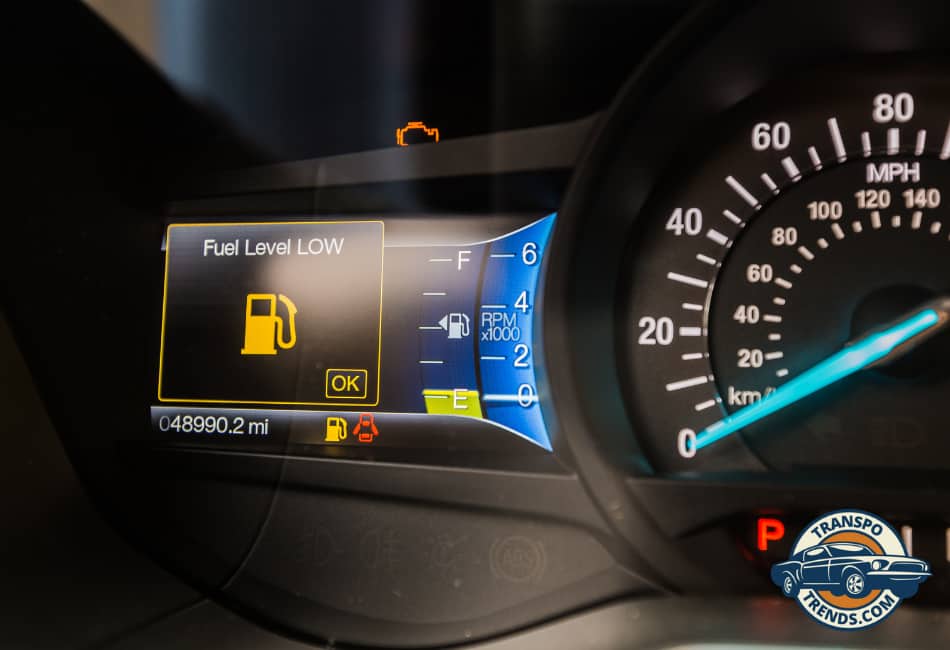Fuel efficiency is not just a matter of improving car performance or saving money – it’s a crucial step towards sustainable living and environmental conservation.
In an age where climate change is a pressing concern, conscious efforts to reduce fuel consumption can make a significant difference. Moreover, these efforts are equally beneficial for your wallet, given the ever-rising fuel costs.
While automatic cars are often associated with higher fuel consumption, there are numerous strategies that drivers can adopt to enhance their vehicle’s fuel efficiency.
This guide will walk you through 24 ways to reduce fuel consumption in automatic cars, providing you with practical techniques to make your driving more environmentally friendly and cost-effective.
Driving Habits for Better Fuel Efficiency
1. Smooth Acceleration and Deceleration
Smooth acceleration and deceleration are critical factors in optimizing fuel efficiency. Abrupt starts and stops can increase fuel consumption by up to 20%.
Thus, it’s recommended to accelerate gradually from a stop and decelerate slowly when approaching traffic lights or stop signs.
2. Maintain a Consistent Speed
Driving at a steady speed minimizes the unnecessary burning of fuel, especially on highways. This can be achieved by using the car’s cruise control features.
By avoiding sudden speed changes, you can save a significant amount of fuel and enhance overall driving efficiency.
3. Anticipate Traffic and Road Conditions
Anticipating traffic and road conditions can also help reduce fuel consumption. By staying aware of upcoming traffic lights, stop signs, and other potential traffic delays, you can adjust your speed or change lanes in advance, avoiding sudden braking or acceleration.
4. Reduce Speed for Improved Efficiency
Driving at high speeds can significantly increase fuel consumption. Reducing your speed, particularly on highways, allows the engine to operate more efficiently, thereby conserving fuel.
As a rule of thumb, every 5 mph you drive over 50 mph is equivalent to paying an additional $0.18 per gallon for gas.
5. Avoid Rapid Braking and Acceleration
Rapid braking and acceleration can waste fuel and increase emissions. It’s more fuel-efficient to accelerate and decelerate gently.
Aim to drive in a way that minimizes the need for hard braking – this not only reduces fuel consumption but also contributes to a safer and smoother driving experience.
Vehicle Maintenance and Care
Proper vehicle maintenance and care is essential for optimizing fuel efficiency. A well-kept vehicle runs more smoothly, uses less fuel, and has a lower environmental impact than a poorly maintained one.
6. Check and Maintain Proper Tire Pressure
Tire pressure significantly affects a vehicle’s fuel efficiency. Underinflated tires create more rolling resistance, making the engine work harder and consume more fuel.
Therefore, it is vital to routinely check the tire pressure, at least once a month. It’s best to use a good-quality tire pressure gauge for accurate readings and ensure the tire pressure is in line with the manufacturer’s recommendations.
7. Regular Engine Maintenance and Tune-ups
Regular engine maintenance can also help optimize fuel consumption. Routine tune-ups ensure the engine runs efficiently and any potential issues are identified and addressed early on.
This includes checking of spark plugs, timing belts, fuel injectors, and other engine components. It’s recommended to follow the manufacturer’s maintenance schedule.
8. Use High-Quality Fuel Wisely
The quality of fuel used in a vehicle can substantially impact its fuel efficiency. High-quality fuels improve engine performance, reduce emissions, and enhance fuel economy.
Preferably, use the grade of fuel recommended by the vehicle’s manufacturer. Also, consider using fuel additives or cleaners that can help remove buildup in the engine and improve its performance.
9. Maintain Proper Lubrication with Oil Changes
Proper lubrication reduces friction in the engine, allowing it to run more smoothly and use less fuel. Regular and timely oil changes are key to maintaining optimal engine lubrication.
It’s recommended to use high-quality engine oil that meets the standards specified by the vehicle manufacturer.
10. Keep Air Filters Clean and Functional
Clean and functional air filters are essential for the efficient operation of a vehicle’s engine. A clogged air filter restricts the flow of air into the engine, reducing its efficiency and increasing fuel consumption.
Therefore, regular inspection and cleaning or replacement of air filters are necessary for optimal fuel efficiency.
Optimizing Vehicle Usage
11. Limit Air Conditioning Usage
Air conditioning can significantly increase fuel consumption, especially when used at lower speeds. While it offers comfort during hot weather, try to limit its use.
Consider using air conditioning only for high-speed driving, and opt for natural ventilation at lower speeds. Pre-cooling the car while still parked can also reduce air conditioning load once on the move.
12. Minimize Idling Time
Idling can consume more fuel than you think. When a car is idling, it’s essentially getting zero miles per gallon while burning fuel. Therefore, minimize idling time as much as possible.
If you’re going to be stopped for more than a minute, consider turning off the engine. Modern vehicles are designed to start quickly, so the fuel saved by turning the engine off often outweighs the fuel used to restart it.
13. Reduce Excess Weight in the Car
The fuel efficiency of a vehicle is inversely related to its weight. The heavier a vehicle, the harder the engine has to work to move it, thereby consuming more fuel.
Keep your vehicle free from unnecessary items, and only carry what’s needed. Additional items like roof racks, bike racks, or cargo boxes can also increase the vehicle’s weight and wind resistance, reducing fuel efficiency.
14. Proper Use of Windows and Aerodynamics
The way we use windows and manage vehicle aerodynamics can impact fuel efficiency. At high speeds, keep your windows closed to reduce air drag.
Conversely, at lower speeds, open the windows instead of using the air conditioning to save fuel. Also, regularly check your vehicle’s aerodynamic features, such as spoilers, diffusers, and wheel well liners, for any damage that could increase drag.
15. Avoid Unnecessary Short Trips
It’s often overlooked, but short trips can consume a lot of fuel. This is because most cars consume extra fuel when the engine is cold to get it up to operating temperature.
If you can, combine short trips to minimize the number of times your car needs to warm up, and consider alternative means of transportation for short distances, such as walking or biking.
Utilizing Vehicle Features
16. Use Cruise Control on Highways
Cruise control is an excellent tool for enhancing fuel efficiency during long highway drives. It helps maintain a constant speed, eliminating the need for sporadic acceleration and braking, which often leads to excessive fuel consumption.
By creating a smoother driving experience, cruise control can significantly reduce your vehicle’s fuel intake.
17. Engine Warm-Up: The Modern Approach
Contrary to older vehicles which needed a warm-up period to operate efficiently, modern engines are designed to reach optimal operating temperature quickly once the car is in motion.
Warming up the engine by idling is unnecessary and leads to excess fuel consumption. Start your car, wait for a few seconds to allow oil to circulate, then drive off gently.
18. Selecting the Right Gear Mode
Depending on your vehicle, you may have various gearing options that can influence fuel economy. In manual vehicles, try to shift to higher gears as soon as you comfortably can.
In automatic cars, ensure your vehicle is in ‘D’ (Drive) during regular driving conditions. Some vehicles offer an ‘Eco’ mode which optimizes various vehicle features to reduce fuel usage.
19. Utilizing Overdrive on Highways
Overdrive is a feature found in most modern automatic cars. When activated, it lowers engine speed at high vehicle speeds, reducing fuel consumption and engine wear. It’s particularly beneficial during highway driving when maintaining a steady, high speed.
20. Coasting to Save Fuel
Coasting, or allowing your vehicle to move without acceleration, is an excellent technique for saving fuel. It’s most effective when driving downhill or approaching a stop.
In these scenarios, release the accelerator early to allow the car to coast, reducing the need for braking, and therefore, fuel consumption.
Planning and Route Optimization
Efficient use of fuel isn’t only about how you drive; it’s also about where you drive. Careful planning and route optimization can significantly enhance your vehicle’s fuel economy.
21. Plan Efficient Routes Using Navigation Apps
Modern navigation apps offer more than just directions. They can help you plan the most efficient route, avoiding traffic congestion, road works, and other hindrances that might consume extra fuel. Use these apps to your advantage to optimize your travel path and save fuel.
22. Avoid Traffic Congestion and Delays
Stuck in traffic equates to wasted fuel. Whenever possible, avoid areas of high congestion and time your trips to bypass rush hour.
Navigation apps are an excellent tool for this, as many offer real-time traffic updates and alternative routes.
23. Combine Errands to Minimize Trips
Instead of making multiple trips for various tasks, try to combine errands into a single journey.
This method not only saves fuel but also reduces unnecessary wear and tear on your vehicle. It’s more convenient, too!
24. Strategic Use of Driving Modes
Many modern vehicles offer different driving modes, tailored to various driving conditions. Eco mode or similar fuel-saving modes modify the vehicle’s performance to prioritize fuel efficiency.
Using these modes strategically, especially on longer drives or in heavy traffic, can contribute significantly to fuel savings.
Conclusion
In this article, we have explored 24 effective strategies for reducing fuel consumption in automatic cars. These techniques range from mindful driving habits like smooth acceleration and regular maintenance of your vehicle, to strategic use of technology like navigation apps for route optimization and the eco mode in modern vehicles.
By adopting these practices, we don’t just enhance our vehicle’s fuel efficiency, but also contribute actively to environmental conservation. The collective impact of these small changes can be significant, leading to substantial fuel savings and lesser carbon emissions.
We encourage all drivers to incorporate these practices into their daily routines for not just a more cost-effective driving experience, but also a greener and more sustainable one. Let’s do our part in making our roads and our planet a better place!

